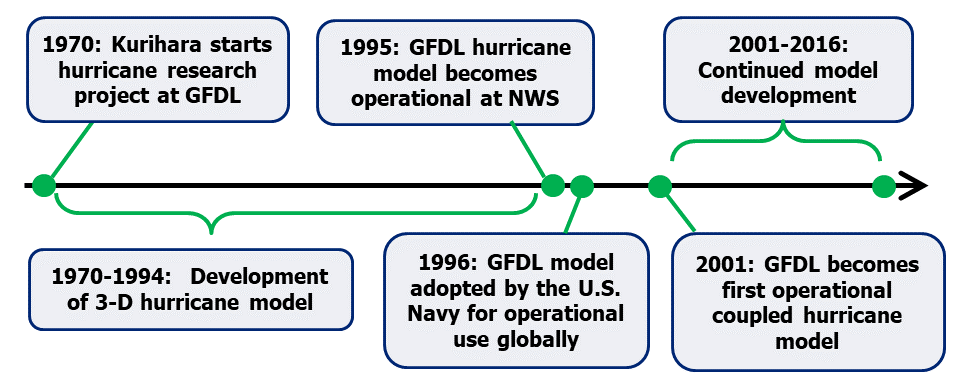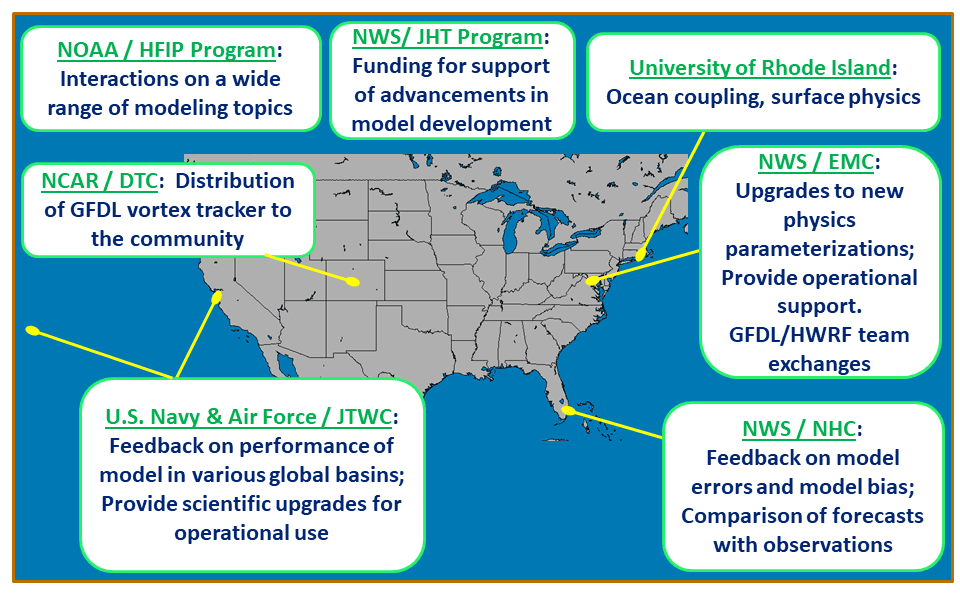September 6th, 2019
Key Finding
- Successful collaborations played a pivotal role in transitioning the GFDL hurricane research model into a long-standing state-of-the-art operational system that provided critical guidance to the nation for over 20 years.
Morris Bender, Timothy Marchok, Robert Tuleya, Isaac Ginis, Vijay Tallapragada, Stephen Lord. Bulletin of the American Meteorological Society. DOI: 10.1175/BAMS-D-18-0197.1
In 1970, a new hurricane project was established at GFDL to perform basic hurricane research using numerical modeling. Within a few years, this pioneering research had led to the development of a new hurricane model. As the reputation of the model grew, GFDL was approached in 1986 by the director of the National Meteorological Center to establish a collaboration between the two Federal organizations to transition the model into an operational modeling system. After a multi-year effort by GFDL scientists to develop a system that could support rigorous requirements of operations, and multi-year testing had demonstrated its superior performance compared to existing guidance products, the model became operational in 1995. Through additional collaborations between GFDL and the U.S. Navy, the model was also made operational at Fleet Numerical Meteorology and Oceanography Center in 1996.
GFDL scientists continued to support and improve the model during the next two decades by collaborating with other scientists at GFDL, NOAA’s Environmental Modeling Center (EMC), the National Hurricane Center, the U.S. Navy, the University of Rhode Island (URI), Old Dominion University, and the NOAA Hurricane Research Division. Scientists at GFDL, URI, and EMC collaborated to transfer key components of the GFDL model to the National Weather Service’s new Hurricane Weather and Research Forecast model that was put into operation in 2007.
Scientific collaborations between federal agencies and the academic community played a critical role in the successful transition of the GFDL hurricane model, originally developed for basic research, into a vital operational product. The synergistic efforts of these scientists led to significantly improved hurricane forecasts for the nation. It is hoped that the experiences of the authors will serve as an example of how such collaboration can benefit the nation with improved weather guidance products.




